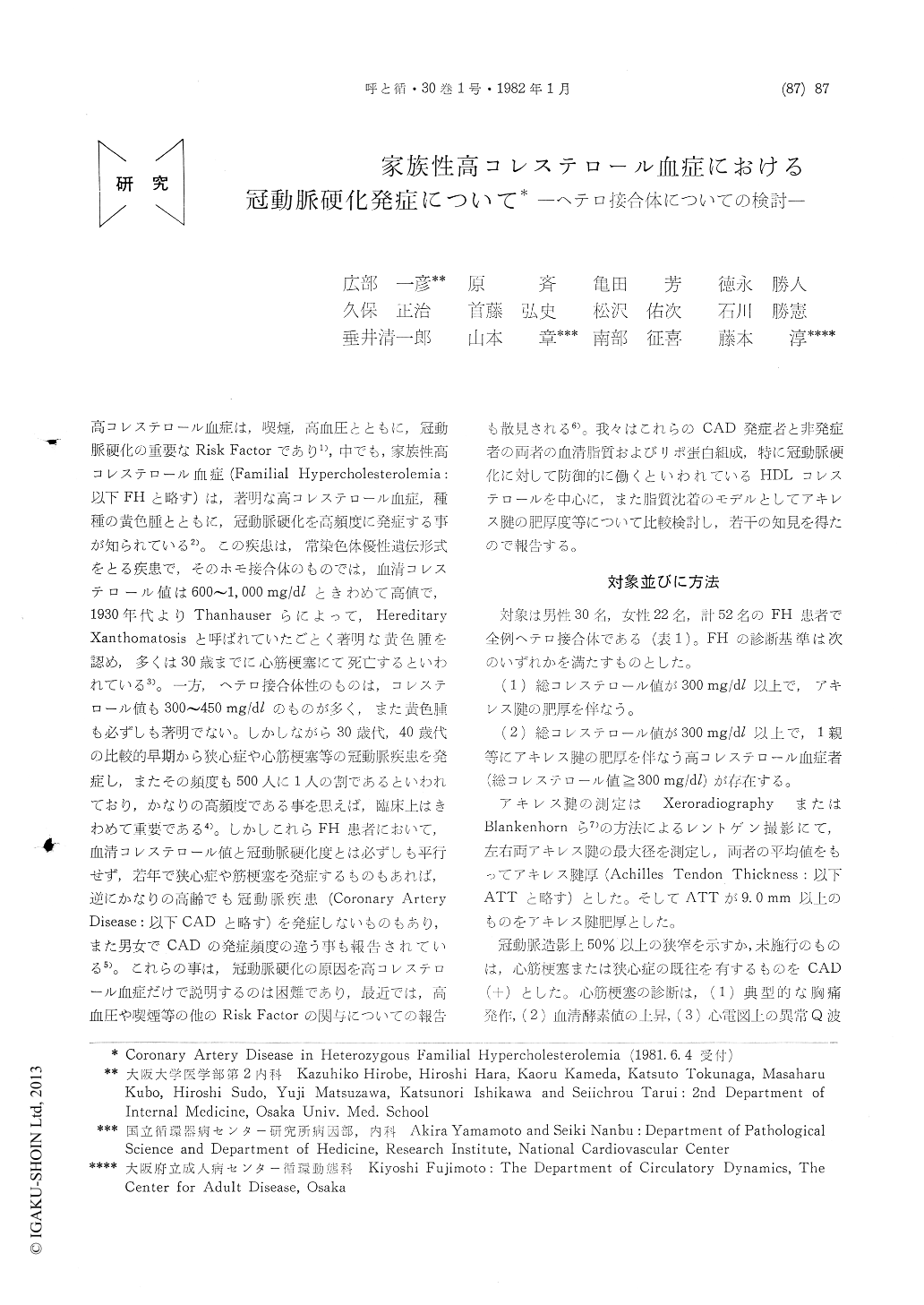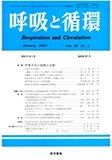Japanese
English
- 有料閲覧
- Abstract 文献概要
- 1ページ目 Look Inside
高コレステロール血症は,喫煙,高血圧とともに,冠動脈硬化の重要なRisk Factorであり1),中でも,家族性高コレステロール血症(Familial Hypercholesterolemia:以下FHと略す)は,著明な高コレステロール血症,種種の黄色腫とともに,冠動脈硬化を高頻度に発症する事が知られている2)。この疾患は,常染色体優性遺伝形式をとる疾患で,そのホモ接合体のものでは,血清コレステロール値は600〜1,000mg/dlときわめて高値で,1930年代よりThanhauserらによって,HereditaryXanthomatosisと呼ばれていたごとく著明な黄色腫を認め,多くは30歳までに心筋梗塞にて死亡するといわれている3)。一方,ヘテロ接合体性のものは,コレステロール値も300〜450mg/dlのものが多く,また黄色腫も必ずしも著明でない。しかしながら30歳代,40歳代の比較的早期から狭心症や心筋梗塞等の冠動脈疾患を発症し,またその頻度も500人に1人の割であるといわれており,かなりの高頻度である事を思えば,臨床上はきわめて重要である4)。
Coronary artery disease (CAD) is a common complication of Familial Hypercholesterolemia (FH), but some patients are not associated with CAD even if their serum cholesterol levels are high enough and are at old age. The purpose of this study is to define the relationship between the prevalence of CAD and the lipoproteins abnormalities and Achilles tendon thickness in FH patients considering age and sex.
51 heterozygous FH patients were devided into two groups, that were patients with CAD and without CAD. The levels of total cholesterol (TC), HDL-cholesterol (HDL-C), triglyceride (TG), Atherogenic Index (AI) and Achilles tendon thickness (ATT) were detected and compaired between each other.

Copyright © 1982, Igaku-Shoin Ltd. All rights reserved.


